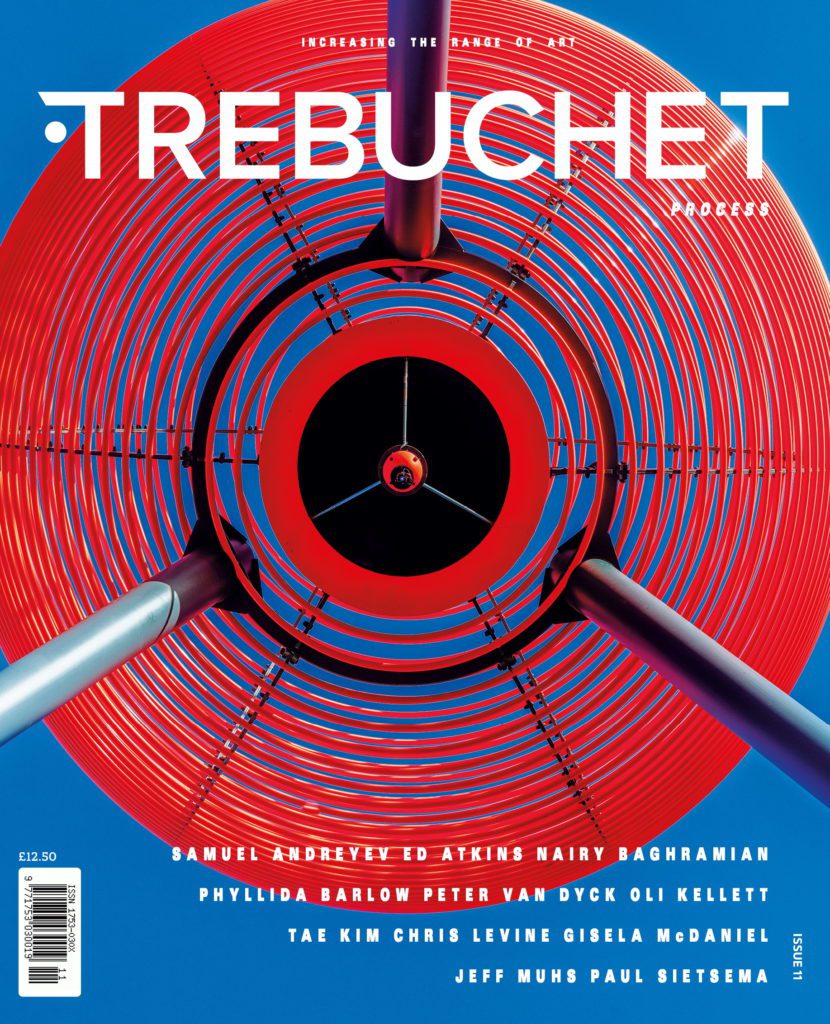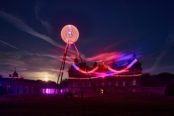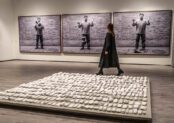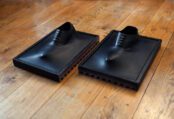There is a simplicity to Light art that works against interpretive story. Viewers have to find the superposition of themselves as viewers against the intention of the artist. There is a functional arte povera to light. It’s a very common medium and we find moments of lit inspiration without trying too hard each day. We assume the beauty of light is easy and perhaps hardwired in humans so what is there for artists to say with light?
Contrast the difficulties of saying something specific with light works and the dazzling array of technological advances that occur in our ability to use light and we find ourselves in a rich area of challenge and channel. There are many possibilities to say something, to use light to convey experience, to make a sensory impact that does something more than blinding us with novelty – but few artists manage to reach the audience. Why is that?
One answer might be that the thrill of being the first artist to use a technique means that less attention is paid to using it meaningfully. For artist Chris Levine his use of light faces that challenge head on. Guided by the sort of works he wants to make, Levine works with the latest tech and pushes it along the arc of art. Giving us such a clear idea of where he wants to go he’s vulnerable as an artist, we can see where his installations and pieces succeed and where they sink into the interest of their execution.

Over the course of Levine’s career he’s had a mixture of high profile and personal works but his practice has always gravitated around a spiritual or existential theme. From luminescent portraits of the Queen to a 25-metre-high red orb at Houghton Hall in Norfolk, Chris Levine’s ongoing manipulation of how we perceive the universal offers us an uncommon position on the nature of art. “If you distil the essence of matter, it’s all illusory; there’s nothing there. So to me the sublime is to go beyond the physical, to go beyond into the realms of the unseen, where dimensions overlap” (Levine 2022).
Featured as a cover artist for Trebuchet’s issue on Process, we interviewed him to understand how he used the wow-factor of light and scale to make something moving and personal.
Tell us about your work with lasers that ‘write’ on your eye?
It’s a phenomenon called persistence of vision, a technique that’s been around for a long time. I must have seen that 20 years ago or so and thought it had potential. We call it a blip; we needed a name for the technique. It’s something I’ve pioneered and made a signature of my work, this idea of creating images in your peripheral vision. A lot of my work is collaborative, and I work with some really capable developers. Whether they’re heliographs, or electronic engineers, my objective is always about creating the experience, but by working within the parameters of what’s realistic.
As the scale gets bigger, the platforms get louder, so you have to be pretty sure that it’s going to work. You’re operating within the realms of theory with a certain amount of experimentation, but then come the time to actually do it. And it’s nerve-racking. But, I think that they’ve worked well, they’ve had quite an interesting response. Essentially, how it works is it’s scanning an image on one axis. So it’s scanning through an image really quickly to keep it safe and high quality. The portrait, my picture, which is one image that we scanned across really quickly, from left to right, 3040 times a second.

So when you turn your head from left to right, you see the entire image, and you see it in a flash. It’s a new visual language, and we’re developing it by laser. I’ve been using LEDs. You always need a physical object to project the light from, but with the new laser technique, you can literally just project a laser line onto something. It could be the side of a building that’s 20 metres tall. It’s literally just a light coloured wall to reflect the laser, and you get the same effect. I was the only one people hadn’t heard of at Haughton Hall. Damien Hirst, Henry Moore, James Terrell – it was intimidating.
Does the wow factor of your work override the meaning you’re trying to convey?
The technological wow factor can go beyond being a wow factor. Hopefully, once you get people into that state, then they’re removed from whatever else they might have been thinking, doing or feeling. It brings them into the present moment and opens something. It is always a challenge to stop things from getting lost in translation when working with technology, and there’s so much technology involved. So much unfamiliarity for viewers in its delivery that can stop a soulful connection. I use a laser because it gives us a very pure form of light, just single wavelengths of light. The result is a pure signal.

In comparison, I remember the first holograms I saw when I started art school. There was so much technology involved they were more laboratory exercises than studio. It wasn’t really an art form; I thought it had a lot of potential, but in order to do even the most simple type of hologram took a lot of work. To create something that’s got some emotional connection is a challenge. With all my work, I’m often trying to pull it back to something really simple, really pure. The title of the show, 528 Hertz Love Frequency, is a single frequency, something very pure.
I’m not a scientist, but I’m working with these different phenomena. For instance, at 528 hertz, advanced genetics found DNA resonates to it. So not at 527 or 529, but exactly 528 hertz. DNA resonates, and it can be manipulated and it can be worked with, so here we’re getting into the end of the coding of life. 528 hertz, it’s the middle node on an ancient scale, solfeggio scale, which is sacred geometry applied to sound. So you have printed the golden ratio or the Fibonacci sequence you get these mathematical orders, which it would appear that everything adheres to these geometries.

Energy nodes in the body, the chakra system, and the Gregorian Chant music utilise the solfeggio scale, which gives it a very expansive, harmonising sound. It feels more expansive. And so this middle note, 528, is the heart chakra. So 528, it’s often referred to as the love frequency of the love signal. Rather than any prescribed narrative, I wanted to be quite loose when people come in and to orientate themselves. I want them to ask what is going on here, how, why, what. Because normally, we don’t really have to question much. We get up in the morning; we go through our patterns of behaviour, and we go through our routines, and it’s pretty habitual.
A lot of it is we’re operating from the mind, but it’s the heart consciousness is that is the real wisdom. There’s so much noise in the mind that very difficult to connect with the heart. The biggest electromagnetic pulse from the body is from the heart. The mind is a processor. My art is getting to a point of stillness. To me, meditation is really important in my work. Meditation directly informs my work. Sometimes I go on these retreats, the vipassana retreats, where you do a vow of silence for 10 days. And these ideas come to me, it’s like, I want to write these notes down.
Meditation retreat?
Read more in Trebuchet 11: Process
Featuring: Samuel Andreyev / Ed Atkins/ Nairy Baghramian / Phyllida Barlow / Peter Van Dyck / Oli Kellett / Tae Kim / Chris Levine / Gisela McDaniel / Paul Sietsema / Jeff Muhs

The aim of art is to represent not the outward appearance of things, but their inward significance. – Aristotle





















